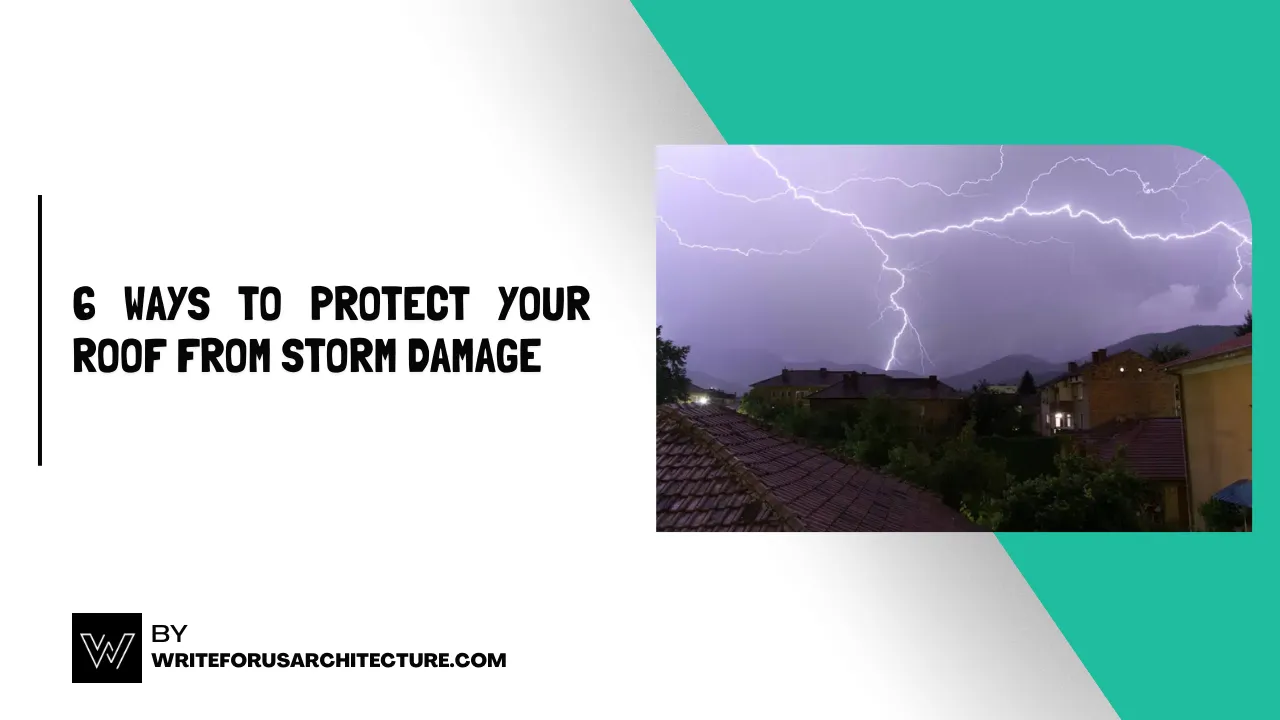A strong roof is essential. A roof serves as protection against wind, rain, and flying debris. The strength of a roof faces severe testing during storms, which results in major structural damage. Homeowners need to implement protective measures for their roofs before severe weather conditions arrive. Prevention is key. Six proven methods exist to protect roofs against storm damage.
Trim Trees and Overhanging Branches
Trees create attractive surroundings and shade, yet they represent potential dangers. Roofs face the risk of broken branches when they extend over the roof during stormy weather. The wind’s force transforms these objects into destructive flying objects.
Heavy rainfall weakens tree stability which leads to an increased danger of falling tree limbs. Regular trimming helps prevent this. The distance between branches and structures decreases the risk of damage occurring. Regular tree trimming serves as an easy method to avoid expensive post-storm repairs. Tree maintenance practices both preserve tree health and safeguard your property assets. Taking small preventive measures effectively minimizes potential risks that surround your house.
Inspect and Maintain Shingles
Shingles are the first line of defense against the elements. When they are loose or missing, a roof becomes vulnerable. Wind and rain can seep through gaps, leading to leaks and water damage. Routine inspections help catch problems early. Homeowners should check for curling, cracking, or missing shingles. If damage is found, repairs should be made quickly.
Strong, intact shingles can withstand the force of high winds and heavy rain. Additionally, keeping shingles in good condition prevents the need for more expensive roof replacements. Regular maintenance also extends the lifespan of the roof.
Secure Gutters and Downspouts
Gutters direct rainwater away from a home. When they are clogged or loose, water can overflow. This leads to leaks and structural damage. Storms bring excessive rain, making gutters even more important. Cleaning them regularly prevents blockages. Ensuring they are firmly attached keeps them from being torn away by strong winds. Proper drainage protects both the roof and the foundation of a house.
Leaky or overflowing gutters can also lead to erosion around the foundation. Installing gutter guards can help keep debris out, reducing the frequency of cleaning and helping your gutters function efficiently year-round.
Reinforce Roof Flashing
Flashing is found around chimneys, vents, and skylights. It seals gaps and prevents water from seeping in. During a storm, strong winds can lift or loosen flashing. Water then finds its way into the home. Checking and securing flashing before a storm is essential. If it is damaged or worn, replacement is the best option. A well-sealed roof will keep water out and prevent costly repairs. Regular inspection of flashing ensures that it remains in good condition, reducing the risk of leaks. Applying a protective sealant can also offer added protection against harsh weather conditions.
Schedule a Professional Roof Inspection
Some damage is not easy to spot. Small cracks or weak spots can lead to bigger issues when a storm hits. A professional inspection can uncover hidden problems. Roofing experts know what to look for. They can reinforce weak areas, replace damaged materials, and provide guidance on storm preparedness. Homeowners in areas prone to storms should schedule inspections regularly. If you reside in the area, a reliable Austin roofing company can assess a roof and recommend necessary improvements.
Invest in High-Quality Roofing Materials
Not all roofs are built the same. Some materials withstand storms better than others. Metal roofing, for example, offers excellent durability. Impact-resistant shingles can endure hail and strong winds. Homeowners looking to upgrade should consider materials designed for extreme weather. Investing in high-quality roofing materials can prevent damage and extend the life of a roof.
Additionally, materials like clay tiles and slate can resist high winds and moisture, offering long-lasting protection. Choosing the right roofing material for your area’s climate can ultimately reduce the need for frequent repairs and save money in the long run.
Conclusion
Storms are unpredictable, but roof damage doesn’t have to be. Simple steps can make a big difference. Regular maintenance, trimming trees, and using strong materials all help.
Inspections by professionals provide added security. A well-maintained roof offers peace of mind when bad weather arrives. Taking action now can prevent costly repairs later. Protecting a roof is protecting a home.
Also Read:

